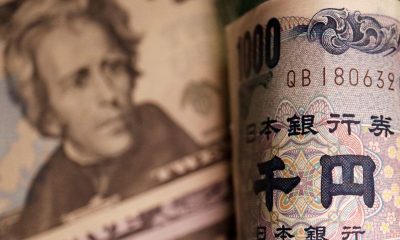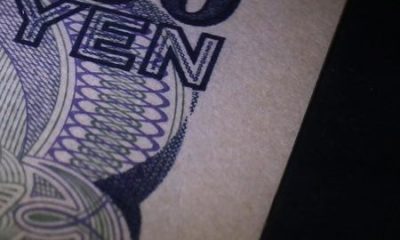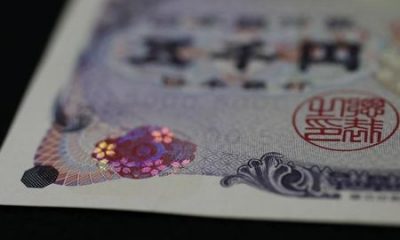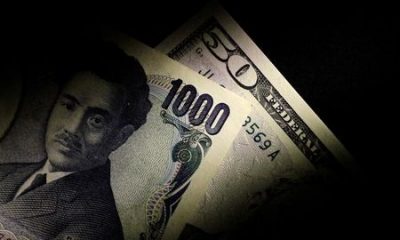Economy
Wall Street meanders higher after CPI report, crude slides
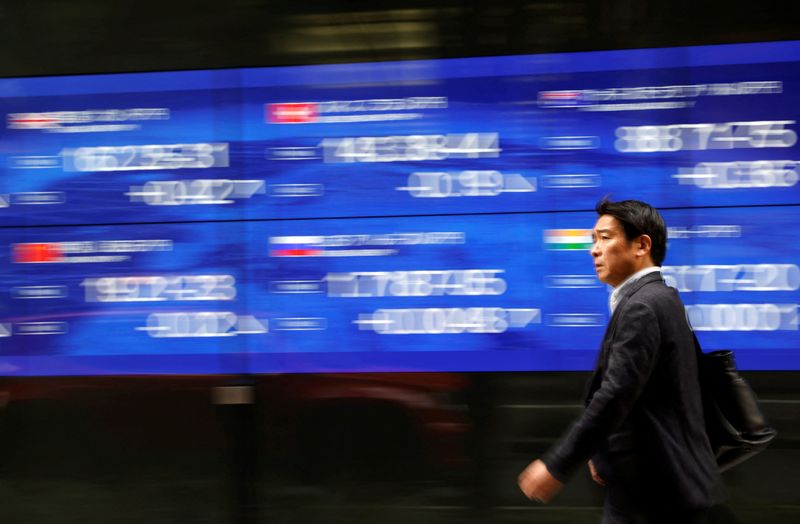
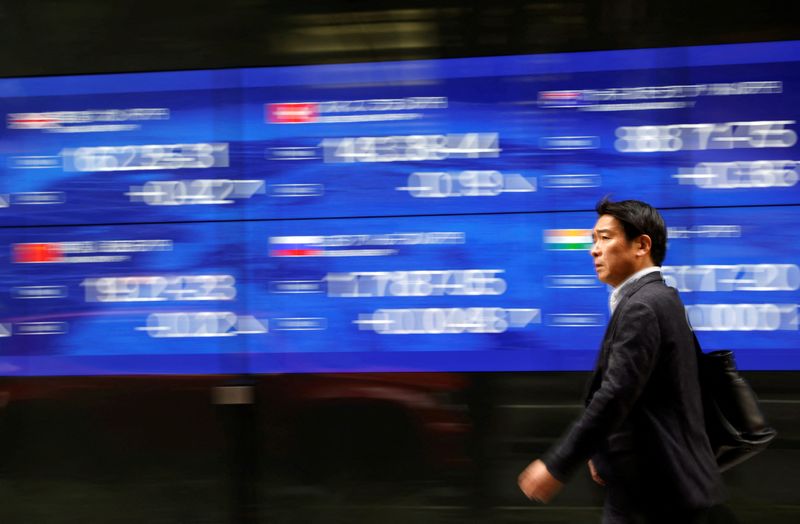
© Reuters. FILE PHOTO: A passerby walks past an electric monitor displaying various countries’ stock price index outside a bank in Tokyo, Japan, March 22, 2023. REUTERS/Issei Kato/File Photo
By Stephen Culp
NEW YORK (Reuters) -U.S. stocks inched higher in choppy trading on Tuesday and the dollar dipped after a crucial report showed sticky U.S. inflation continues to meander along its slow, downward path as the Federal Reserve gathers for its December policy meeting.
Crude prices tumbled over worries of softening global demand, although the U.S. economy appears robust enough to withstand the Fed’s restrictive policy, for now.
The three major U.S. stock indexes fluttered in choppy trading before turning modestly higher, putting them on track to notch fresh closing highs.
The Labor Department’s Consumer Price Index (CPI) unexpectedly inched higher on a monthly basis in November, but edged lower on an annual basis, stoking concerns that inflation is taking longer to return to the Fed’s 2% target than many had hoped and raising the possibility that the central bank will keep policy rates in restrictive territory for longer than anticipated.
“There’s something for everyone in this release,” said Scott Ladner, chief investment officer at Horizon Investments in Charlotte, North Carolina.
“If you want to believe that inflation is reigniting, there are elements of the report that support that.” Ladner added. “If you want to believe inflation is cooling, you can find things in there to support that too.”
“We’re getting a middling reaction to a middling number.”
The Federal Open Markets Committee (FOMC) convenes today for its two-day monetary policy meeting, which is expected to culminate in a decision to leave the Fed funds target rate at 5.25%-5.50%.
The Fed is also expected to release its Summary Economic Projections and dot plot, which should shed light on the central bank’s path forward.
“I’m expecting a dovish dot plot, but the statement will be consistent,” said Peter Cardillo, chief market economist at Spartan Capital Securities in New York. “The fight against inflation has not been won and the Fed will continue to move as necessary.”
In a busy week for central banks elsewhere, the European Central Bank and the Bank of England are also due to issue interest rate decisions on Thursday.
The rose 91.41 points, or 0.25%, to 36,496.34, the gained 2.74 points, or 0.06%, to 4,625.18 and the added 15.61 points, or 0.11%, to 14,448.10.
European shares reversed course following the CPI report, after and France’s CAC-40 touched record highs
The pan-European index lost 0.13% and MSCI’s gauge of stocks across the globe gained 0.12%.
Emerging market stocks rose 0.30%. MSCI’s broadest index of Asia-Pacific shares outside Japan closed 0.43% higher, while rose 0.16%.
Treasury yields drifted lower in choppy trading after the core CPI number landed in line with expectations.
Benchmark 10-year notes last rose 3/32 in price to yield 4.2274%, from 4.239% late on Friday.
The 30-year bond last rose 2/32 in price to yield 4.3276%, from 4.33% late on Friday.
The dollar pared its losses against a basket of world currencies in the wake of the inflation data.
The fell 0.15%, with the euro up 0.22% to $1.0785.
The Japanese yen strengthened 0.44% versus the greenback at 145.55 per dollar, while sterling was last trading at $1.2553, flat on the day.
Oil prices slid, turning back from earlier gains as concerns about excess supply and slowing demand overshadowed supply risks due to escalating tensions in the Middle East.
fell 3.07% to $69.13 per barrel and was last at $73.82, down 2.91% on the day.
Gold lost some momentum as the dollar pared its losses following the CPI report.
added 0.1% to $1,982.90 an ounce.
Economy
Russian central bank says it needs months to make sure CPI falling before rate cuts -RBC


© Reuters. Russian Central Bank Governor Elvira Nabiullina attends a news conference in Moscow, Russia June 14, 2019. REUTERS/Shamil Zhumatov/File Photo
MOSCOW (Reuters) – Russia’s central bank will need two to three months to make sure that inflation is steadily declining before taking any decision on interest rate cuts, the bank’s governor Elvira Nabiullina told RBC media on Sunday.
The central bank raised its key interest rate by 100 basis points to 16% earlier in December, hiking for the fifth consecutive meeting in response to stubborn inflation, and suggested that its tightening cycle was nearly over.
Nabiullina said it was not yet clear when exactly the regulator would start cutting rates, however.
“We really need to make sure that inflation is steadily decreasing, that these are not one-off factors that can affect the rate of price growth in a particular month,” she said.
Nabiullina said the bank was taking into account a wide range of indicators but primarily those that “characterize the stability of inflation”.
“This will take two or three months or more – it depends on how much the wide range of indicators that characterize sustainable inflation declines,” she said.
The bank will next convene to set its benchmark rate on Feb. 16.
The governor also said the bank should have started monetary policy tightening earlier than in July, when it embarked on the rate-hiking cycle.
Economy
China identifies second set of projects in $140 billion spending plan


© Reuters. FILE PHOTO: Workers walk past an under-construction area with completed office towers in the background, in Shenzhen’s Qianhai new district, Guangdong province, China August 25, 2023. REUTERS/David Kirton/File Photo
SHANGHAI (Reuters) – China’s top planning body said on Saturday it had identified a second batch of public investment projects, including flood control and disaster relief programmes, under a bond issuance and investment plan announced in October to boost the economy.
With the latest tranche, China has now earmarked more than 800 billion yuan of its 1 trillion yuan ($140 billion) in additional government bond issuance in the fourth quarter, as it focuses on fiscal steps to shore up the flagging economy.
The National Development and Reform Commission (NDRC) said in a statement on Saturday it had identified 9,600 projects with planned investment of more than 560 billion yuan.
China’s economy, the world’s second largest, is struggling to regain its footing post-COVID-19 as policymakers grapple with tepid consumer demand, weak exports, falling foreign investment and a deepening real estate crisis.
The 1 trillion yuan in additional bond issuance will widen China’s 2023 budget deficit ratio to around 3.8 percent from 3 percent, the state-run Xinhua news agency has said.
“Construction of the projects will improve China’s flood control system, emergency response mechanism and disaster relief capabilities, and better protect people’s lives and property, so it is very significant,” the NDRC said.
The agency said it will coordinate with other government bodies to make sure that funds are allocated speedily for investment and that high standards of quality are maintained in project construction.
($1 = 7.1315 renminbi)
Economy
Russian central bank says it needs months to make sure CPI falling before rate cuts -RBC


© Reuters. Russian Central Bank Governor Elvira Nabiullina attends a news conference in Moscow, Russia June 14, 2019. REUTERS/Shamil Zhumatov/File Photo
MOSCOW (Reuters) – Russia’s central bank will need two to three months to make sure that inflation is steadily declining before taking any decision on interest rate cuts, the bank’s governor Elvira Nabiullina told RBC media on Sunday.
The central bank raised its key interest rate by 100 basis points to 16% earlier in December, hiking for the fifth consecutive meeting in response to stubborn inflation, and suggested that its tightening cycle was nearly over.
Nabiullina said it was not yet clear when exactly the regulator would start cutting rates, however.
“We really need to make sure that inflation is steadily decreasing, that these are not one-off factors that can affect the rate of price growth in a particular month,” she said.
Nabiullina said the bank was taking into account a wide range of indicators but primarily those that “characterize the stability of inflation”.
“This will take two or three months or more – it depends on how much the wide range of indicators that characterize sustainable inflation declines,” she said.
The bank will next convene to set its benchmark rate on Feb. 16.
The governor also said the bank should have started monetary policy tightening earlier than in July, when it embarked on the rate-hiking cycle.

 Forex2 years ago
Forex2 years agoForex Today: the dollar is gaining strength amid gloomy sentiment at the start of the Fed’s week

 Forex2 years ago
Forex2 years agoHow is the Australian dollar doing today?

 Forex1 year ago
Forex1 year agoUnbiased review of Pocket Option broker

 Forex2 years ago
Forex2 years agoDollar to pound sterling exchange rate today: Pound plummeted to its lowest since 1985

 Cryptocurrency2 years ago
Cryptocurrency2 years agoWhat happened in the crypto market – current events today

 World2 years ago
World2 years agoWhy are modern video games an art form?

 Stock Markets2 years ago
Stock Markets2 years agoMorgan Stanley: bear market rally to continue

 Economy2 years ago
Economy2 years agoCrude oil tankers double in price due to EU anti-Russian sanctions

